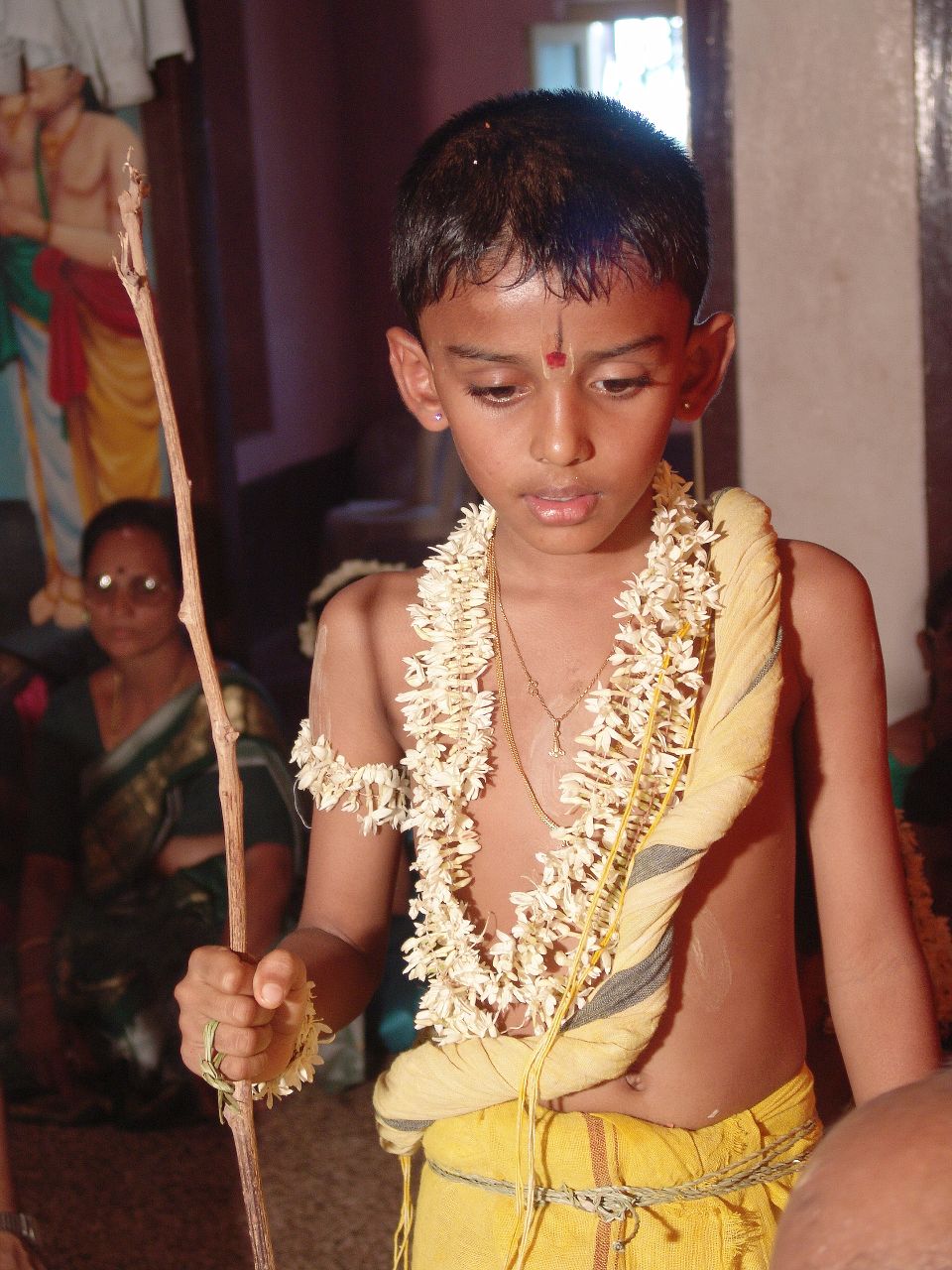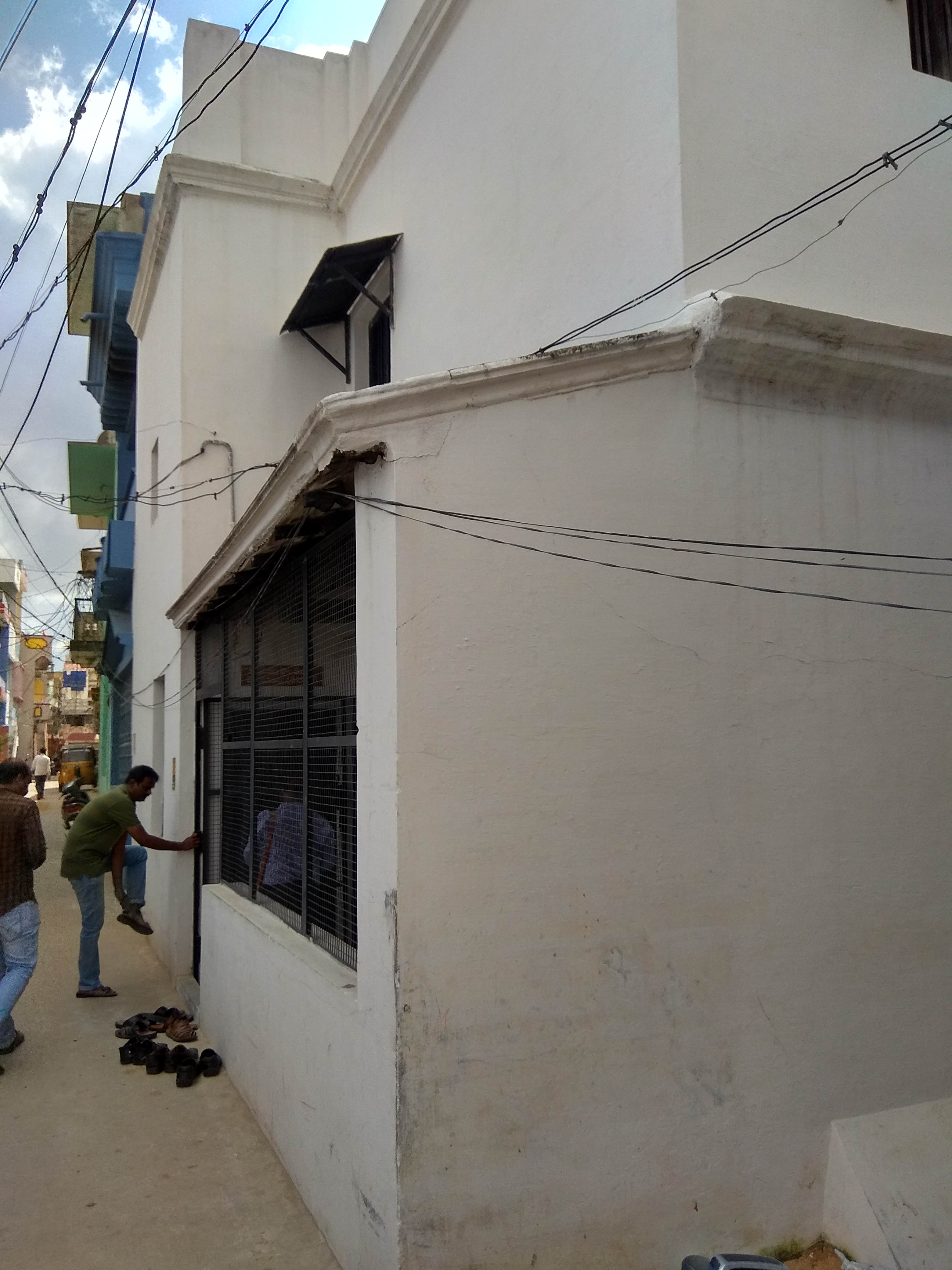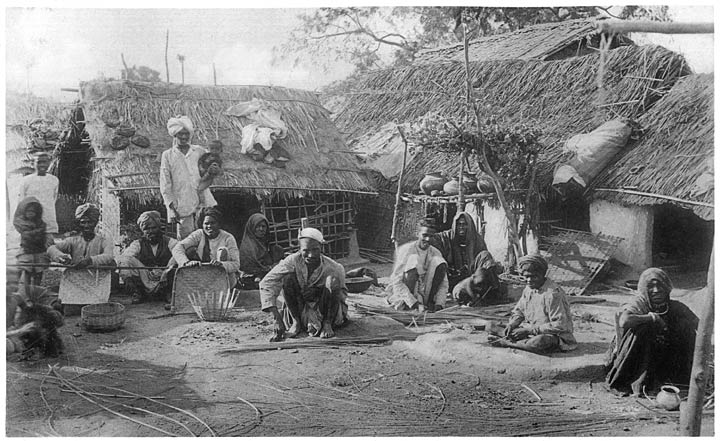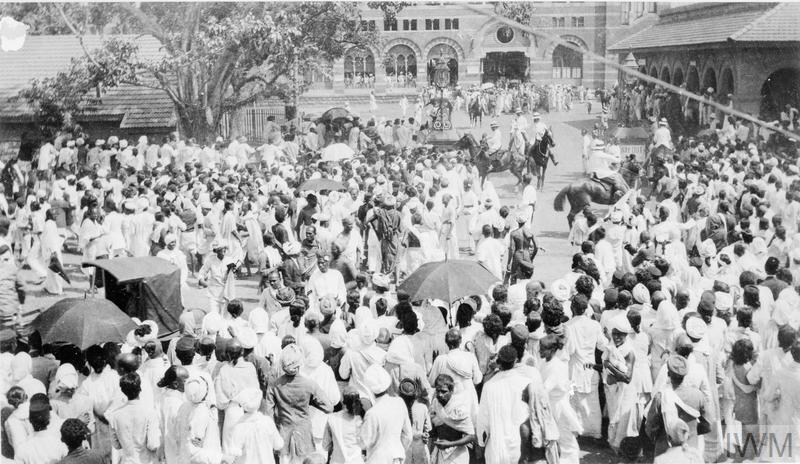|
Banaras Hindu University
Banaras Hindu University (BHU), formerly Benares Hindu University, is a collegiate, central, and research university located in Varanasi, Uttar Pradesh, India, and founded in 1916. The university incorporated the Central Hindu College, which had been founded by theosophist and future Indian Home Rule leader Annie Besant in 1898. By 1911 Besant was marginalised on the governing board of the College by Madan Mohan Malviya who preferred a more traditional Hinduism with its hereditary caste system to Besant's more theosophical one. Five years later Malaviya established the university with the support of the maharaja of Darbhanga Rameshwar Singh, the maharaja of Benares Prabhu Narayan Singh, and the lawyer Sunder Lal. With over 30,000 students, and 18,000 residing on campus, BHU is the largest residential university in Asia. The university is one of the eight public institutions declared as an Institute of Eminence by the Government of India. It is also one of the ... [...More Info...] [...Related Items...] OR: [Wikipedia] [Google] [Baidu] |
Banaras Hindu University Kulgeet
The Banaras Hindu University Kulgeet (BHU Kulgeet) , ''i.e.'', () is a poem written by Indian chemist Shanti Swaroop Bhatnagar while serving as professor at BHU. It has been composed by another professor at BHU, Pt. Omkar Nath Thakur. The poem has been popularized and adopted in original as the official university anthem of Banaras Hindu University and is called ''Kulgeet''. It is customary in the university for this anthem to be sung in chorus before any official event or festival of the university is started. The last stanza of the poem is dedicated to Malviya ji, founder of the university. The university tagline in Hindi '','' is borrowed directly from the last line of the poem, while the English tagline ''capital of knowledge'' is a translation of the same. The Kulgeet has often earned accolades throughout history. The Kulgeet has been presented in art, and popular media as well. Lyrics Code of conduct The ''Kulgeet'' is sung in the university in chorus, an ... [...More Info...] [...Related Items...] OR: [Wikipedia] [Google] [Baidu] |
Rameshwar Singh
Rameshwar Singh Thakur (16 January 1860 – 3 July 1929) was the maharaja of Darbhanga in the Mithila region from 1898 to his death. He became maharaja on the death of his elder brother Lakshmeshwar Singh, who died without issue. He was appointed to the Indian Civil Service in 1878, serving as assistant magistrate successively at Darbhanga, Chhapra, and Bhagalpur. He was exempted from attendance at the Civil Courts and was appointed a Member of the Bengal Legislative Council in 1885. He was the first Indian appointed to the lieutenant governor's Executive Council. He was a member of the Council of India of the governor general of India in 1899 and on 21 September 1904 was appointed a non-officiating member representing the Bengal Provinces, along with Gopal Krishna Gokhale from Bombay Province. He was president of the Bihar Landholder's Association, president of the All India Landholder's Association, president of Bharat Dharma Mahamandal, a member of the Council of State ... [...More Info...] [...Related Items...] OR: [Wikipedia] [Google] [Baidu] |
Brahmacharya
''Brahmacharya'' (; Sanskrit: Devanagari: ब्रह्मचर्य) is the concept within Indian religions that literally means "conduct consistent with Brahman" or "on the path of Brahman". Brahmacharya, a discipline of controlling the senses, is seen as a way to liberation. Though sexual restraint is a part of brahmacharya, brahmacharya encompasses all striving toward a passionless state. In one context, ''brahmacharya'' is the first of four '' ashrama'' (age-based stages) of a human life. The ''brahmacharya'' (bachelor student) stage of life – from childhood up to twenty-five years of age – was focused on education and included the practice of celibacy. In this context, it connotes chastity during the student stage of life for the purposes of learning from a ''guru'' (teacher), and during later stages of life for the purposes of attaining spiritual liberation or moksha. In the Hindu, Jain, and Buddhist monastic traditions, ''brahmacharya'' implies, among othe ... [...More Info...] [...Related Items...] OR: [Wikipedia] [Google] [Baidu] |
Upanayan
''Upanayana'' () is a Hindu educational sacrament, one of the traditional saṃskāras or rites of passage that marked the acceptance of a student by a preceptor, such as a ''guru'' or ''acharya'', and an individual's initiation into a school in Hinduism. Some traditions consider the ceremony as a spiritual rebirth for the child or future ''dvija'', twice born. It signifies the acquisition of the knowledge of and the start of a new and disciplined life as a brahmāchārya. The Upanayanam ceremony is arguably the most important rite for Brāhmaṇa, Kṣatriya, and Vaiśya males, ensuring his rights with responsibilities and signifying his advent into adulthood''.'' The tradition is widely discussed in ancient Samskṛta texts of Hinduism and varies regionally. The sacred thread or yajñopavīta (also referred to as ''Janeu'', ''Jandhyam'', ''Pūṇūl, Muñja and Janivara'' Yonya) has become one of the most important identifiers of the ''Upanayana'' ceremony in contemporary t ... [...More Info...] [...Related Items...] OR: [Wikipedia] [Google] [Baidu] |
Jiddu Krishnamurti
Jiddu Krishnamurti ( ; 11 May 1895 – 17 February 1986) was an Indian Philosophy, philosopher, speaker, writer, and Spirituality, spiritual figure. Adopted by members of the Theosophy, Theosophical tradition as a child, he was raised to fill the advanced role of Maitreya (Theosophy)#The World Teacher Project, World Teacher, but in adulthood he rejected this mantle and distanced himself from the related religious movement. He spent the rest of his life speaking to groups and individuals around the world; many of these talks have been published. He also wrote many books, among them ''The First and Last Freedom'' (1954) and ''Commentaries on Living'' (1956–60). His last public talk was in January 1986, a month before his death at his home in Ojai, California. Krishnamurti asserted that "truth is a pathless land" and advised against following any doctrine, discipline, teacher, guru, or authority, including himself. He dismissed the need for contrived meditation techniques, inste ... [...More Info...] [...Related Items...] OR: [Wikipedia] [Google] [Baidu] |
Caste
A caste is a Essentialism, fixed social group into which an individual is born within a particular system of social stratification: a caste system. Within such a system, individuals are expected to marry exclusively within the same caste (endogamy), follow lifestyles often linked to a particular occupation, hold a ritual status observed within a hierarchy, and interact with others based on cultural notions of social exclusion, exclusion, with certain castes considered as either more pure or more polluted than others. The term "caste" is also applied to morphological groupings in eusocial insects such as ants, bees, and termites#caste, termites. The paradigmatic ethnographic example of caste is the division of India's Hinduism, Hindu society into rigid social groups. Its roots lie in South Asia's ancient history and it still exists; however, the economic significance of the caste system in India seems to be declining as a result of urbanisation and affirmative action programs. ... [...More Info...] [...Related Items...] OR: [Wikipedia] [Google] [Baidu] |
Madan Mohan Malviya
Madan Mohan Malaviya (25 December 1861 — 12 November 1946; ) was an Indian scholar, educational reformer and activist notable for his role in the Indian independence movement. He was president of the Indian National Congress three times and the founder of Akhil Bharat Hindu Mahasabha. He was addressed as ''Pandit'', a title of respect. Malaviya is known for co-founding one of the prestigious university of India named Banaras Hindu University. Malaviya strove to promote modern education among Indians and co-founded the Banaras Hindu University (BHU) at Varanasi in 1916, which was created under the 1915 BHU Act. It is the largest residential university in Asia and one of the largest in the world, with over 40,000 students across arts, commerce, sciences, engineering, linguistic, ritual, medicine, agriculture, performing arts, law, management, and technology disciplines from all over the world. He was the vice chancellor of the Banaras Hindu University from 1919 to 1938. Mal ... [...More Info...] [...Related Items...] OR: [Wikipedia] [Google] [Baidu] |
Indian Home Rule
The Indian Home Rule movement was a movement in British India on the lines of the Irish Home Rule movement and other home rule movements. The movement lasted around two years between 1916–1918 and is believed to have set the stage for the Indian independence movement under the leadership of Annie Besant and Bal Gangadhar Tilak to the educated English speaking upper class Indians. In 1920, All India Home Rule League changed its name to Swarajya Sabha. Flag Five red and four green horizontal stripes. On the upper left quadrant was the Union Flag, which signified the Dominion status that the movement sought to achieve. A crescent and a seven-pointed star, both in white, are set in top fly. Seven white stars are arranged as in the Saptarishi constellation (the constellation Ursa Major), which is sacred to Hindus. Background The Indian Home Rule movement began amidst the backdrop of the ongoing First World War. The 1909 Government of India Act failed to satisfy the demand ... [...More Info...] [...Related Items...] OR: [Wikipedia] [Google] [Baidu] |
Theosophy
Theosophy is a religious movement established in the United States in the late 19th century. Founded primarily by the Russian Helena Blavatsky and based largely on her writings, it draws heavily from both older European philosophies such as Neoplatonism and Indian religions such as Hinduism and Buddhism. Although many adherents maintain that Theosophy is not a religion, it is variably categorized by Religious studies, religious scholars as both a new religious movement and a form of occultism from within Western esotericism. As presented by Blavatsky, Theosophy teaches that there is an ancient and secretive brotherhood of spiritual adepts known as the Masters of the Ancient Wisdom, Masters, who are found around the world but primarily centered in Tibet. These Masters were alleged by Blavatsky to have cultivated great wisdom and supernatural powers, and Theosophists believe they initiated the modern Theosophical movement through disseminating their teachings via Blavatsky. Theosop ... [...More Info...] [...Related Items...] OR: [Wikipedia] [Google] [Baidu] |
University
A university () is an educational institution, institution of tertiary education and research which awards academic degrees in several Discipline (academia), academic disciplines. ''University'' is derived from the Latin phrase , which roughly means "community of teachers and scholars". Universities typically offer both undergraduate education, undergraduate and postgraduate education, postgraduate programs. The first universities in Europe were established by Catholic Church, Catholic monks. The University of Bologna (), Italy, which was founded in 1088, is the first university in the sense of: *being a high degree-awarding institute. *using the word (which was coined at its foundation). *having independence from the ecclesiastic schools and issuing secular as well as non-secular degrees (with teaching conducted by both clergy and non-clergy): grammar, rhetoric, logic, theology, canon law and notarial law.Hunt Janin: "The university in medieval life, 1179–1499", McFarland, 2 ... [...More Info...] [...Related Items...] OR: [Wikipedia] [Google] [Baidu] |
Research University
A research university or a research-intensive university is a university that is committed to research as a central part of its mission. They are "the key sites of Knowledge production modes, knowledge production", along with "intergenerational knowledge transfer and the certification of new knowledge" through the awarding of Doctor of Philosophy, doctoral degrees, and continue to be "the very center of scientific productivity". (At p. 8.) They can be Public university, public or Private university, private, and often have well-known brand names. Undergraduate courses at many research universities are often academic rather than Vocational university, vocational and may not prepare students for particular careers, but many employers value degrees from research universities because they teach fundamental life skills such as critical thinking. Globally, research universities are overwhelmingly public universities, public institutions, while some countries like the United States and ... [...More Info...] [...Related Items...] OR: [Wikipedia] [Google] [Baidu] |








